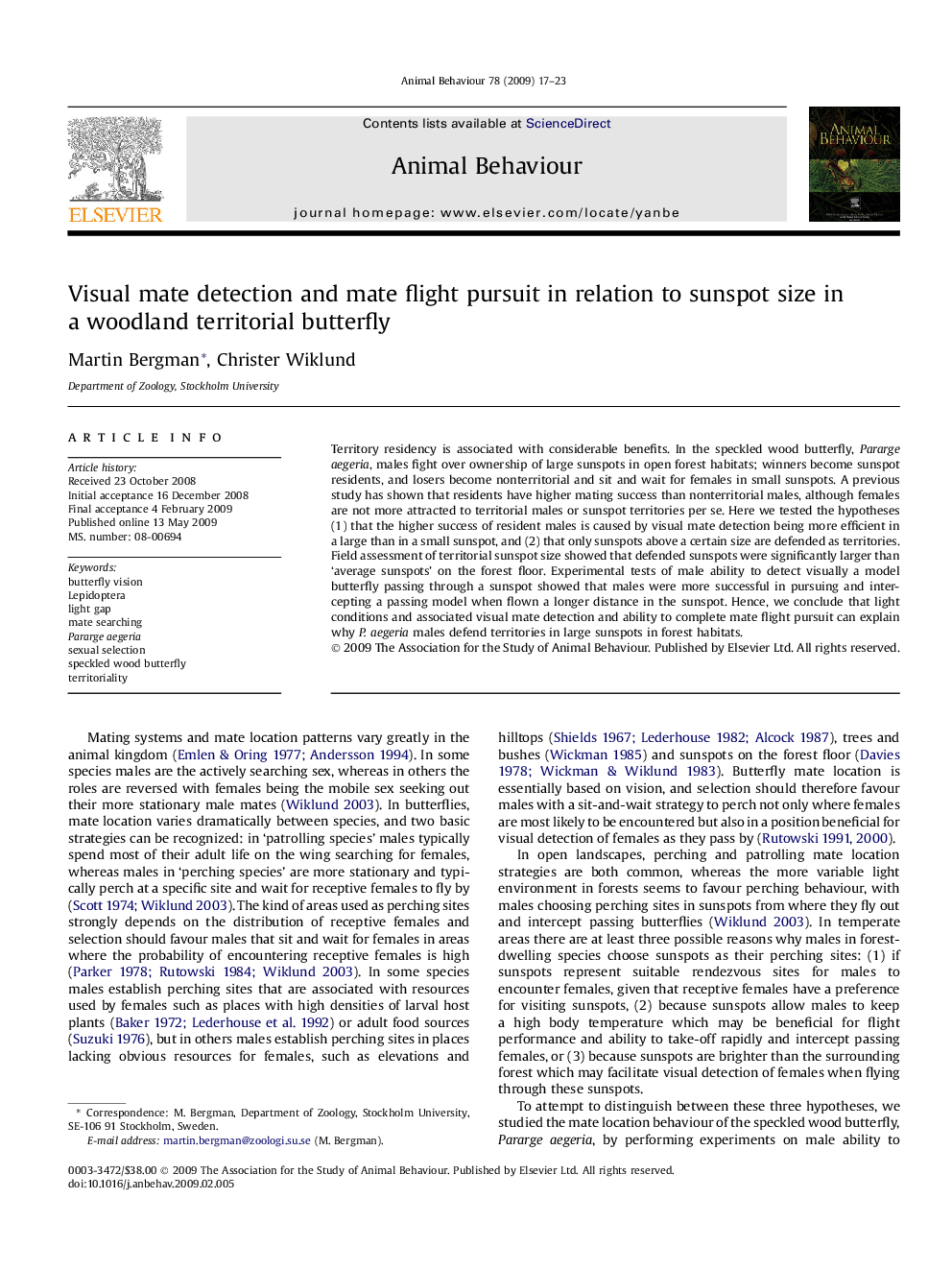| Article ID | Journal | Published Year | Pages | File Type |
|---|---|---|---|---|
| 2417578 | Animal Behaviour | 2009 | 7 Pages |
Territory residency is associated with considerable benefits. In the speckled wood butterfly, Pararge aegeria, males fight over ownership of large sunspots in open forest habitats; winners become sunspot residents, and losers become nonterritorial and sit and wait for females in small sunspots. A previous study has shown that residents have higher mating success than nonterritorial males, although females are not more attracted to territorial males or sunspot territories per se. Here we tested the hypotheses (1) that the higher success of resident males is caused by visual mate detection being more efficient in a large than in a small sunspot, and (2) that only sunspots above a certain size are defended as territories. Field assessment of territorial sunspot size showed that defended sunspots were significantly larger than ‘average sunspots’ on the forest floor. Experimental tests of male ability to detect visually a model butterfly passing through a sunspot showed that males were more successful in pursuing and intercepting a passing model when flown a longer distance in the sunspot. Hence, we conclude that light conditions and associated visual mate detection and ability to complete mate flight pursuit can explain why P. aegeria males defend territories in large sunspots in forest habitats.
